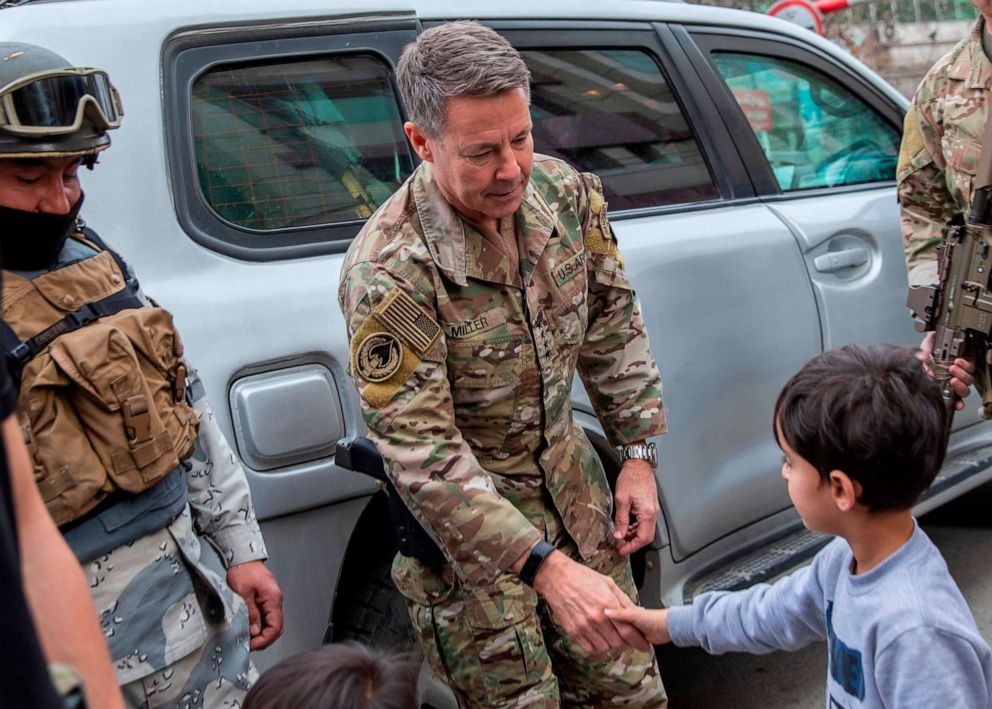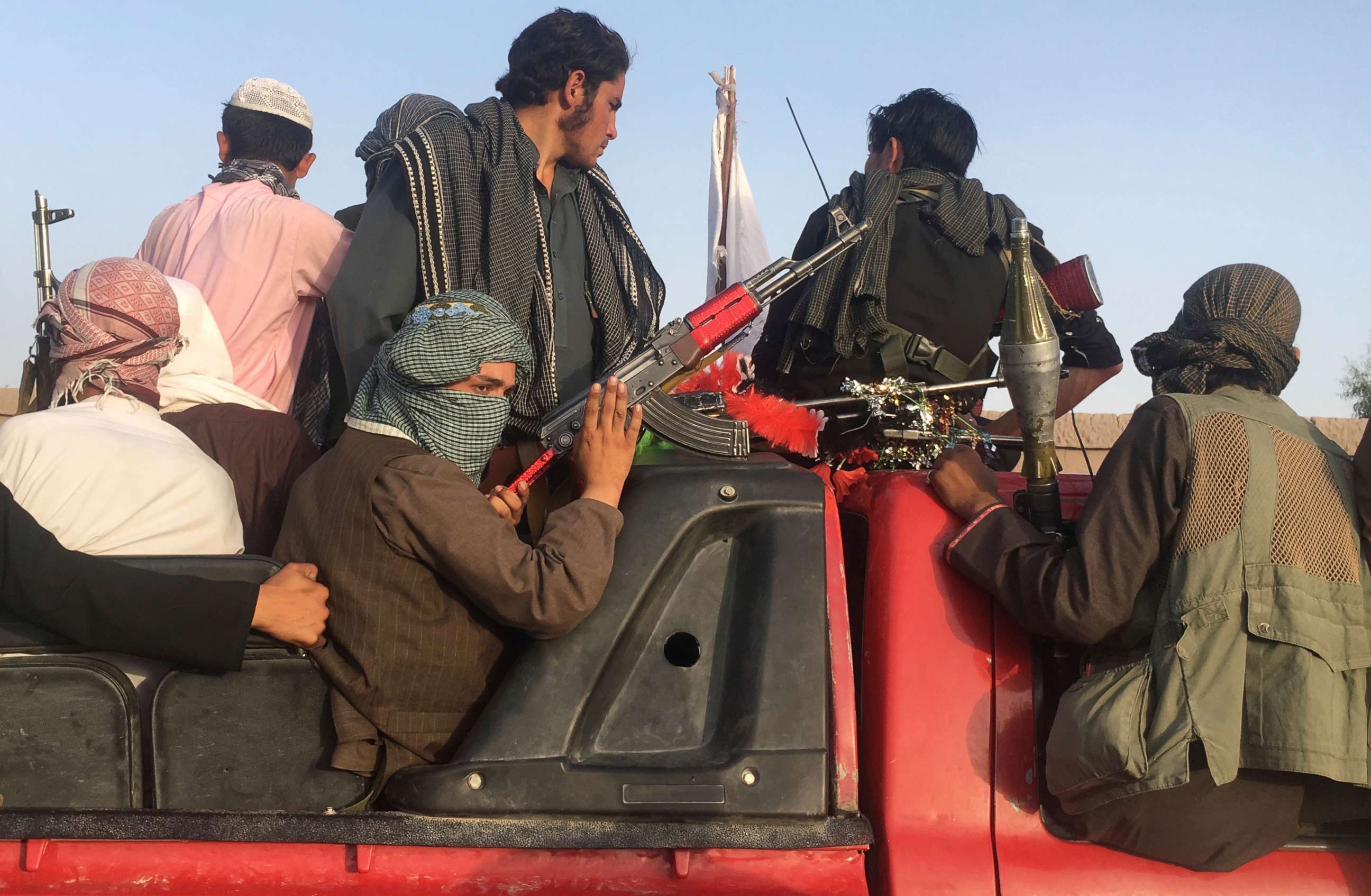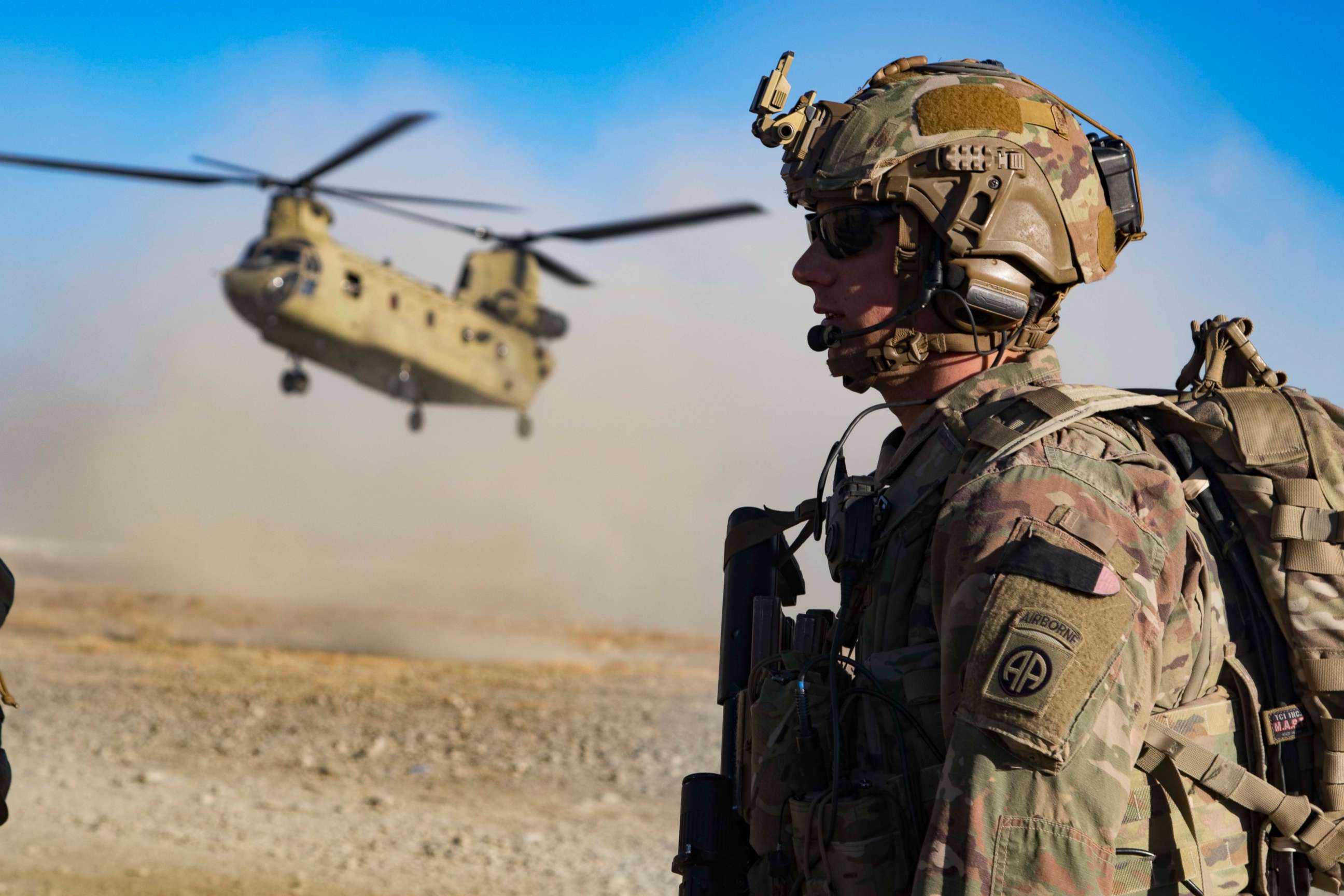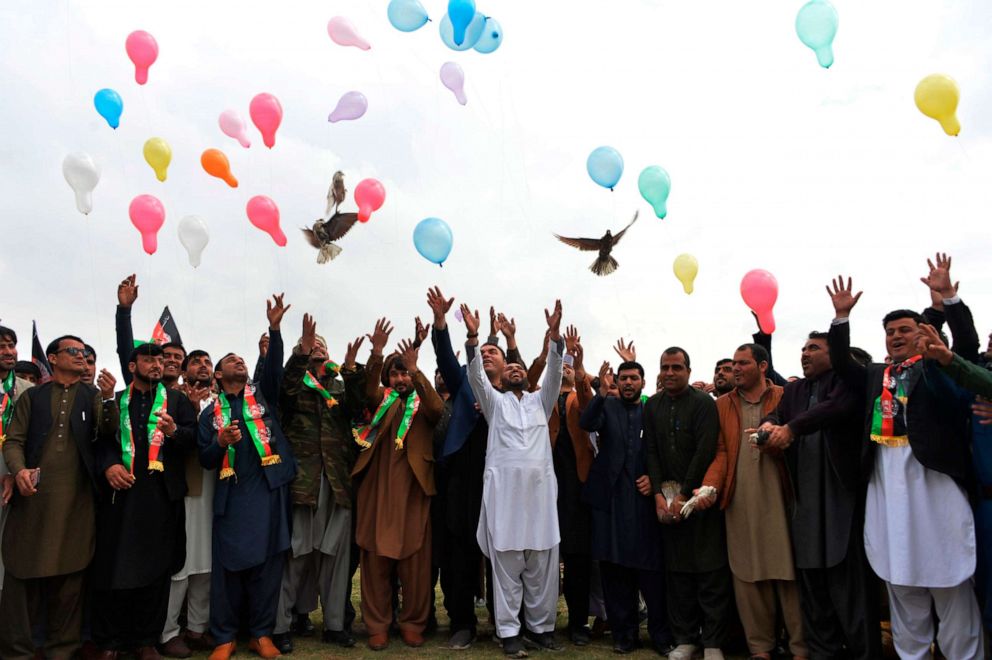What's inside the US deal with the Taliban to end war and bring home troops
The U.S. and the militant group agreed to begin to end America's longest war.
In a historic signing ceremony with the top U.S. diplomat and the Taliban's co-founder, the U.S. and the militant group agreed to begin to end America's longest war.
The deal will commit the U.S. to begin withdrawing its troops from Afghanistan, in exchange for the Taliban sitting down to peace negotiations with other Afghans and severing ties with terror groups like al-Qaida -- which the Taliban harbored ahead of the Sept. 11 attacks, prompting a U.S. invasion and over 18 years of war.
While many of the steps in the deal are conditioned on actions from both sides, there are some immediate impacts as the ink dries in Doha, Qatar, where chief U.S. negotiator Zalmay Khalilzad, his deputy Molly Phee and their team have spent over a year and a half negotiating with the Taliban's representatives.
The text of the agreement was released Saturday, although there are annexes that will not be made public, according to two senior U.S. administration officials, who said they do not include any U.S. commitments, only enforcement mechanisms.
A weeklong deal to reduce violence will continue, the officials said, as the U.S. immediately draws down its approximately 13,000 troops in Afghanistan to 8,600 and closes five military bases within 135 days. U.S. officials, including Gen. Scott Miller, commander of U.S. and NATO forces in Afghanistan, have said that new number is still sufficient to carry out their mission.

There will also be an immediate release of prisoners, with the U.S. committing to facilitate the release of as many as 5,000 Taliban fighters held by the government and up to 1,000 people from "the other side" held by the militant group, all before March 10. Three months after that, all remaining prisoners are supposed to be released, with Taliban fighters committing to abide by the new agreement.
Any withdrawal of U.S. forces beyond 8,600, however, is contingent on the Taliban meeting its commitments, according to the deal, but it sets out a timeline for a full U.S. and NATO withdrawal within 14 months. That includes not just U.S. service members, but any contractors, trainers and non-diplomatic civilian personnel.
It is "an aspirational timeline for withdrawal that is entirely conditions-based, and it will depend on their performance as we judge their performance," a senior administration official said of the Taliban.
Explicitly, withdrawal is tied to the Taliban meeting its counterterrorism commitments, where the group agrees "to prevent any group or individual, including al-Qaida, from using the soil of Afghanistan to threaten the security of the United States and its allies." That means not giving them safe haven on Afghan soil, legal status like asylum or documentation such as visas or passports.
While the deal outlines that the Taliban must "instruct" its members "not to cooperate" with groups like al-Qaida that threaten the U.S., the Taliban do not outright repudiate al-Qaida in the agreement.
"People are concerned about the historic relationship between the Taliban and al-Qaida. We think this is a decisive and historic first step in terms of their public acknowledgement that they are breaking ties with al-Qaida," the senior administration official told ABC News.

There will be verification mechanisms in place to ensure that happens, the official added, including "our military and other asset presence on the ground," but those aren't detailed in the agreement that was released.
Instead, the U.S. commits to removing sanctions on and rescinding rewards for the capture of Taliban leaders by August 27 -- and to lobbying at the United Nations Security Council to remove U.N. sanctions by May 29.
It's not explicit in the agreement, but the senior officials said any further U.S. troop reduction is also tied to the Taliban's behavior in Afghan peace negotiations, although it is not dependent on any particular outcome of that process.
"If the political settlement fails, if the talks fail, there is nothing that obliges the United States to withdraw troops," said a second senior administration official, before adding that President Donald Trump still has the "prerogatives as commander-in-chief" to withdraw U.S. forces as he sees fit.

Aiming for March 10, per the agreement, those peace negotiations will bring together the Taliban and representatives of Afghanistan, including government officials, civil society leaders and women, the senior officials said, to determine the future Afghan government and a "road map" for the country. But government officials will attend in a "private" capacity, as the Taliban still refuses to recognize the government or the constitution -- a concession that has angered many Afghan officials.
Esper was in Kabul to sign a joint declaration with President Ashraf Ghani and his rival and chief executive Abdullah Abdullah to reassert U.S. support for the Afghan government and commit Ghani, Abdullah, their supporters and others to backing the next steps.
Expected to take place in Oslo, Norway, the negotiations will be facilitated by the U.S., along with the United Nations, Norway, Germany, Indonesia and Uzbekistan, among others, the first senior official said. The agreement requests that the U.S. ask the U.N. Security Council to endorse the deal, too.
Both senior officials cautioned those talks could be delayed, especially as post-election squabbling between Ghani and Abdullah continues. Khalilzad will return to Kabul after the signing ceremony to push them to select an inclusive delegation to the negotiations, but it may prove difficult as Abdullah continues to claim to have won the presidency, five months after the votes were cast and 11 days after Ghani was declared the winner despite concerns over the count.
The signing ceremony Saturday came only after a weeklong truce to reduce violence across the country was deemed successful.
The Taliban agreed not to undertake major attacks, while the U.S. and Afghan security forces pledged to hold any airstrikes or raids on Taliban facilities, according to the second senior official, who said the reduction showed the Taliban had "both the commitment and the capability to enforce" that kind of truce.

With the deal signed, there will be a further reduction of violence, the first senior official said, that is supposed to last as the Afghan peace negotiations take place. That is not mentioned in the deal, but it does call for a "permanent and comprehensive ceasefire" to be an agenda of Afghan negotiations, down to the dates and "modalities."
Both senior administration officials said the U.S. will push the parties to reach a ceasefire as quickly as possible -- and for the protection of women's and minorities' rights, which critics say should have been a precondition all along.
But Secretary of State Mike Pompeo said Tuesday, "Our mission set there has been much broader than that," later adding, "the Afghans will drive the solution," including on women's rights. Senior officials have said the U.S. will use its financial assistance as leverage to ensure those protections make it into the new government.
After almost two decades of fighting, the agreement opens the door to the U.S. and the Taliban working together, saying they will "seek positive relations with each other and expect" after Afghan negotiations, to create a "new post-settlement Afghan Islamic government" -- a possibly transformative new chapter for Afghanistan.




